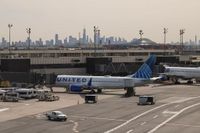Travelers hoping for a smooth journey through Newark Liberty International Airport on August 28, 2025, instead encountered scenes of confusion and mounting frustration. Just days before the Labor Day weekend rush, the Federal Aviation Administration (FAA) issued a ground stop at the busy New Jersey airport, halting all incoming flights and, for a period, even stopping departures. The culprit? A sudden and critical equipment failure that knocked out key radio frequencies for air traffic controllers, pushing one of America’s busiest air hubs into turmoil once again.
The FAA confirmed that the ground stop was triggered by a temporary equipment failure in the air traffic control system, specifically affecting radio communications in the Philadelphia TRACON area, which manages Newark arrivals and departures. According to Fox News, the agency stated, “There were equipment issues that affected some radio frequencies in the Philadelphia TRACON area that handle Newark arrivals and departures.” The outage began at 15:53 UTC, and while departures continued on a limited basis for a while, all incoming flights were held until the issue could be resolved. The sudden halt created a ripple effect across the entire U.S. aviation network, with delays and cancellations quickly mounting.
Passengers were urged to check their flight status with airlines before traveling, as arrival times were significantly affected. Many found themselves waiting for hours in crowded terminals, with some flights diverted to other airports and others circling in the sky, awaiting clearance to land. The FAA’s status website showed that, during the ground stop, arrival delays averaged about 90 minutes. For travelers, the advice was clear: stay glued to airline apps and airport social media channels for the latest updates, and prepare for longer wait times as congestion built from delayed arrivals.
The timing of the disruption could hardly have been worse. The ground stop came just ahead of the busy Labor Day travel period, when the Transportation Security Administration (TSA) expected approximately 17 million people to fly between August 20 and September 4. Newark, a critical hub for both domestic and international travel, plays an outsized role in connecting passengers up and down the East Coast and across the globe. As the FAA worked to restore full functionality, travelers and airlines alike scrambled to adjust to the chaos.
But for many familiar with Newark’s recent history, this latest incident was less a surprise than a grim reminder of ongoing vulnerabilities. As detailed by Cedar News and other outlets, Newark Liberty International Airport has suffered a string of technical faults, staffing shortages, and infrastructure issues throughout 2025. April 28 saw a 90-second radar and communications blackout at Philadelphia TRACON, disabling radar and comms for controllers managing Newark flights. Major delays and cancellations followed, and five controllers took long leave afterwards, compounding staffing shortages. Just days later, on May 9, another 90-second outage struck, once again exposing instability in the system.
The problems were not limited to brief outages. On May 11, a 45-minute ground stop—this time triggered by system audio glitches—led to about 80 cancellations and 60 delays in a single day. Even a two-second radio outage on May 19, which caused no direct flight impact, added to the pattern of recurring technical faults. Investigations revealed that the root cause of many of these failures was Newark’s reliance on aging copper telecommunications wires—technology that had been in use for decades and was prone to failure. Transportation officials admitted the April outage stemmed from a glitch in these copper systems, prompting the FAA to commit to a major upgrade to fiber optic technology. This modernization effort is now underway, but as August’s events made clear, the risks remain real until the work is complete.
Complicating matters further was a major construction project: from April 15 to June 2, one of Newark’s key runways, 4L-22R, was closed for a $121 million resurfacing. With only two runways in operation during this period, the airport’s capacity was severely strained, especially during technical failures. The Port Authority accelerated construction, running crews 24 hours a day, and managed to reopen the runway 13 days early. Nonetheless, weekend closures persisted through December, and the timing of the project exacerbated the ongoing crisis.
To cope with these overlapping challenges, the FAA imposed strict flight caps. On May 20, operations were slashed to just 28 arrivals and 28 departures per hour—a 25 percent reduction from normal capacity. After the runway reopened, the cap was raised to 34 arrivals and departures per hour, still below historic levels. In August, the FAA proposed extending restrictions through 2026, with a maximum of 36 arrivals and departures per hour. These limits underscore the seriousness of the crisis and the long road to full recovery.
Staffing shortages added yet another layer of complexity. Philadelphia TRACON, responsible for Newark’s airspace, needed 38 certified controllers but had just 22 available, with six more on trauma or medical leave following the spring outages. This 42 percent staffing deficit forced remaining controllers to work six-day weeks and long overtime shifts, fueling fatigue, stress, and low morale. According to Cedar News, “The outages in April left some controllers traumatised, taking weeks of leave. In total, 225 days of staffing were lost during the height of the crisis.”
Airlines, especially United Airlines—Newark’s largest carrier—bore the brunt of the disruption. During the peak of the crisis, United cut 35 daily round-trip flights, with summer operations dropping by 6 percent year-over-year. On some days, delays averaged nearly 50 minutes, while others saw waits stretch up to five hours. May 4 alone brought 482 delays and 141 cancellations at Newark, accounting for more than a quarter of all U.S. flight cancellations that day.
By August 2025, Newark Liberty International Airport had stabilized somewhat, but operations remained below historic capacity. Runway 4L-22R was back in service, though weekend closures continued. Ongoing upgrades to fiber optic communications and efforts to recruit and train new controllers signaled a path to recovery, but delays and flight caps were expected to persist into 2026.
For travelers, the lessons of Newark’s year of chaos are clear: America’s aviation infrastructure is fragile, and even a brief technical hiccup can trigger system-wide delays, cancellations, and widespread frustration. As the FAA and airport authorities push forward with modernization and staffing improvements, the hope is that Newark’s experience will serve as a wake-up call for the entire U.S. aviation system. Until then, passengers are well advised to keep their phones charged, their travel plans flexible, and their patience close at hand.

